Solving Sudoku Classic
This article explains how to play Sudoku Classic and details how you can solve it. The general rules of the Sudoku game can be seen in the post The Sudoku Game, click here to go there. To play Sudoku Classic, click here.
Daily Sudoku game is a different game that we publish every day to all our users. It’s the same game for everyone.
Sudoku Classic is the most popular of sudoku games. It is a game of medium difficulty, which most players can solve without major problems.
We have two categories at this level: Classic and Classic Plus (also named Classic+++).
The Sudoku Classic game has between 36 and 41 visible cells, and between 40 and 45 hidden cells. This game initially has 60% of empty cells with direct solution. This means that at the beginning of the game 60% of empty cells have a unique solution directly, independent of the rest.
The Sudoku Classic Plus game or Sudoku Classic+++ game has between 31 and 35 visible cells, and between 46 and 50 hidden cells. This game initially has 40% of empty cells with direct solution. This means that at the beginning of the game 40% of empty cells have a unique solution directly, independent of the rest.
The Sudoku game with 32 visible cells is the most common of the published games.
The Sudoku Classic and Classic+++ is a game for intermedia level players, but on this website simple techniques are indicated to solve them. Beginner and intermediate players will be able to understand them easily.
Examples of our Sudoku Classic
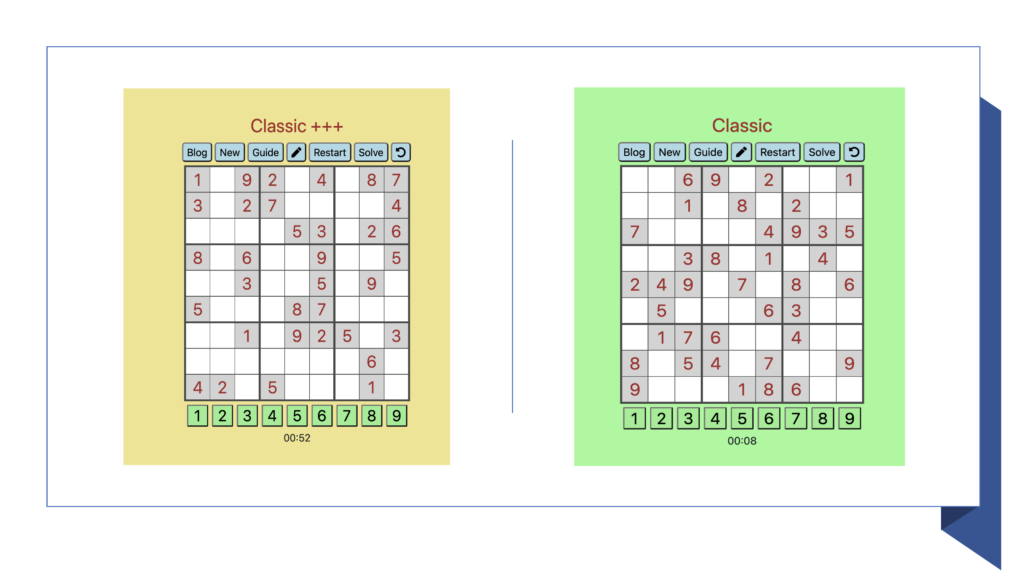
All games of Sudoku Classic published in CrossGames21 are different and all of them have a unique solution. At the classical level there are no games that require iterative processes to be solved.
Number of games
More than 150 millions of different Sudoku Classic games are offered monthly at CrossGame 21, which are completely renewed every month.
Solutions
The solution of all Sudoku Classic games are available on line. All of this games have only one solution.
Level and Statistics
The Sudoku Classic is a game for intermedia users. It has between 36 and 41 visible cells, and between 40 and 45 hidden cells. 60% of empty cells have a direct solution. This game can be solved in 3 steps.
The Sudoku Classic Plus game or Sudoku Classic+++ game has between 31 and 35 visible cells, and between 46 and 50 hidden cells. 40% of empty cells have a direct solution. This game can be solved in 4 steps.
25% of gamers at CrossGames21 have the Sudoku Classic as their favorite game in our web. 40% of them finish the games, and they take in average 11 minutes to solve it.
Menu options
The menu options in the Sudoku Classic game are seven : Info or Blog, New, Guide, Pencil, Restart, Solve and Return.
The first option in the menu is Info or Blog, which directs you to this blog post, named “Solving Sudoku Classic”. You can review the post and return to the current game using de back arrow of your browser, so you will not lose the advanced of the game in progress.
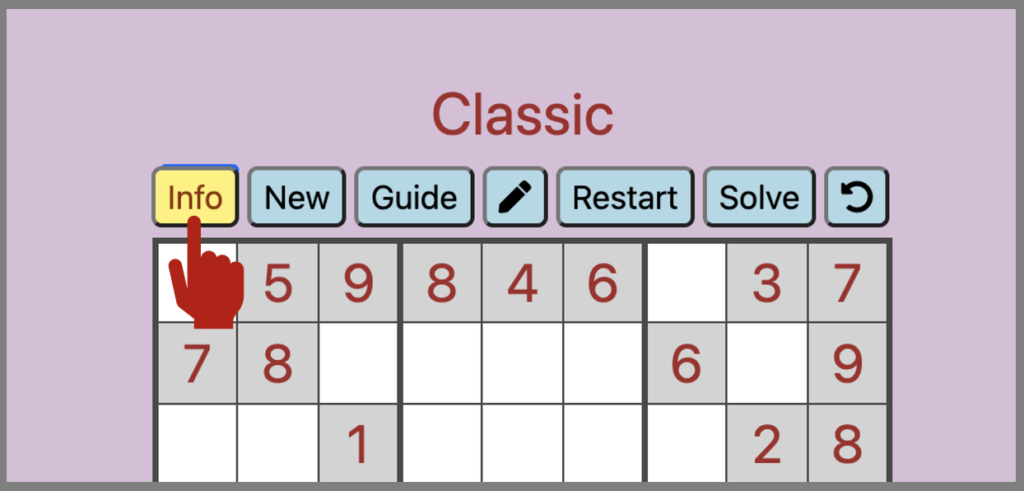
The second option in the menu is New, which allows you to leave the current game and start a new one of the same type (in this case a Classic or Classic+++). If the current game has progress, your confirmation will be required to quit the game because you will not be able to go back.
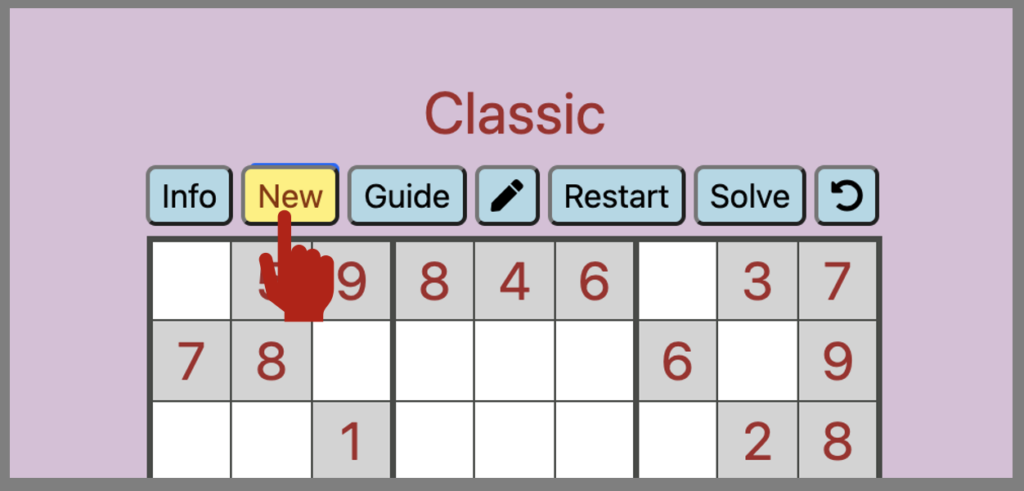
The third option on the menu is Guide. This option offers you some useful aids to solve the game.
The first is that when you select a cell on the board, the row, column and region numbers will be highlighted, so you can see which numbers you could put in that cell.
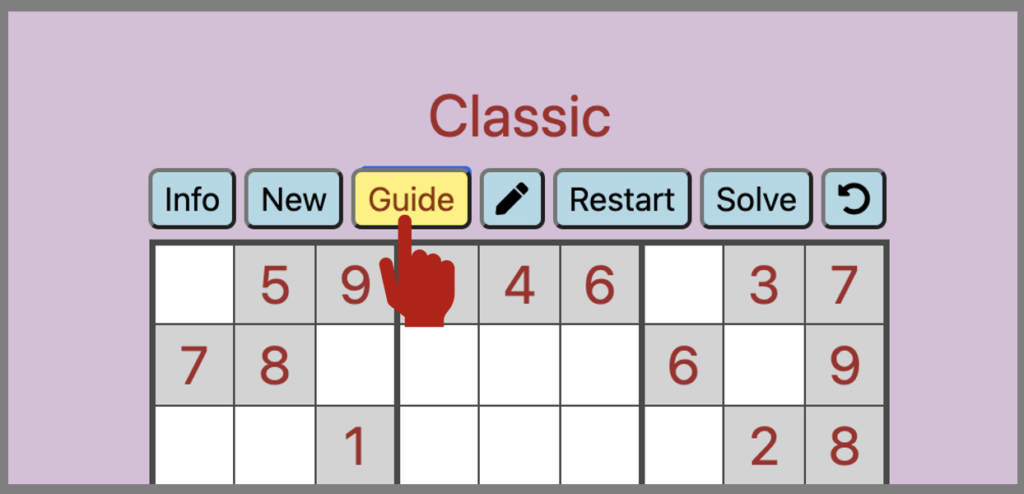
The second help of Guide is that when you select a number on the board, all the same numbers will be highlighted, so that you can see in which other cells it is possible to place that number.
Finally using Guide, the keyboard numbers that have already been filled in on the board will turn off, as shown below.
The fourth option on the menu is the Pencil. With this option you can write down in the empty cells, which numbers are candidates, based on which numbers are already placed in the respective rows, columns and regions. Below we show examples.

The fifth menu option is Restart, which allows you to restart the game. If the current game has progress, your confirmation will be required to restart the game because you will not be able to go back.

The sixth menu option is Solve. With this option the system will show you the solution of the game. This option requires confirmation of the player.
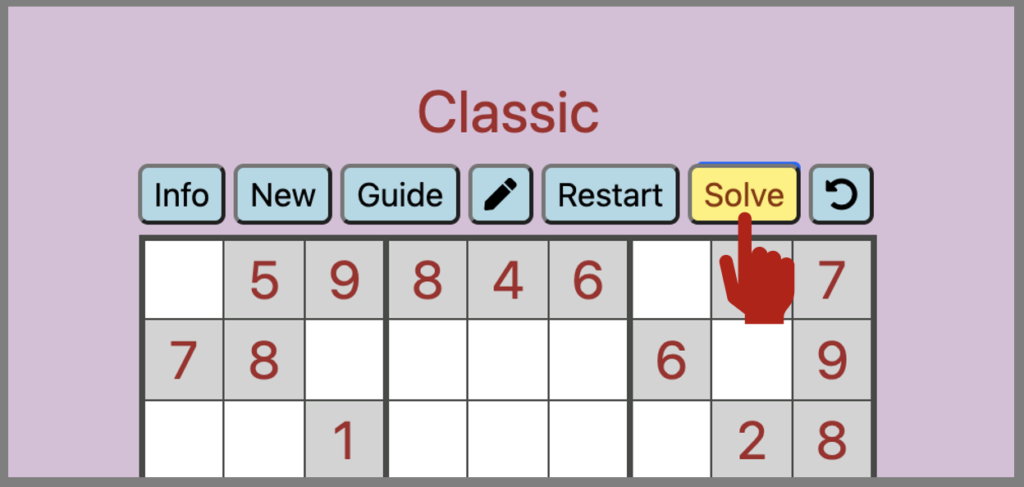
The last option is Return, which will return you to the main games menu. If the current game has progress, your confirmation will be required to quit the game because you will not be able to go back.
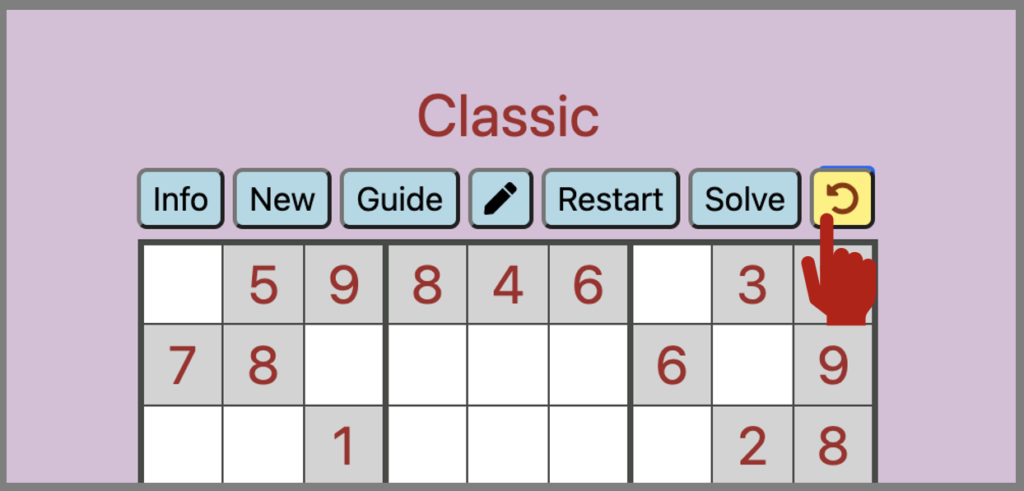
Solving cell by cell
To solve the game, we recommend different paths. The first two are with the Guide option from the menu.
Remember to put Guide mode on. The first and easiest trick to solve the game is the unique number to place in a cell. Look on the board for empty cells surrounded by many numbers. In some cases you will find that there is only one possible number left to put in that cell.
In the example 1 below, the highlighted cell is surrounded by the numbers 2, 3, 4, 5, 6, 7, 8, and 9 in the same row, column, or region. So, it is only possible to put the number 1 in that cell.

Example 1 :
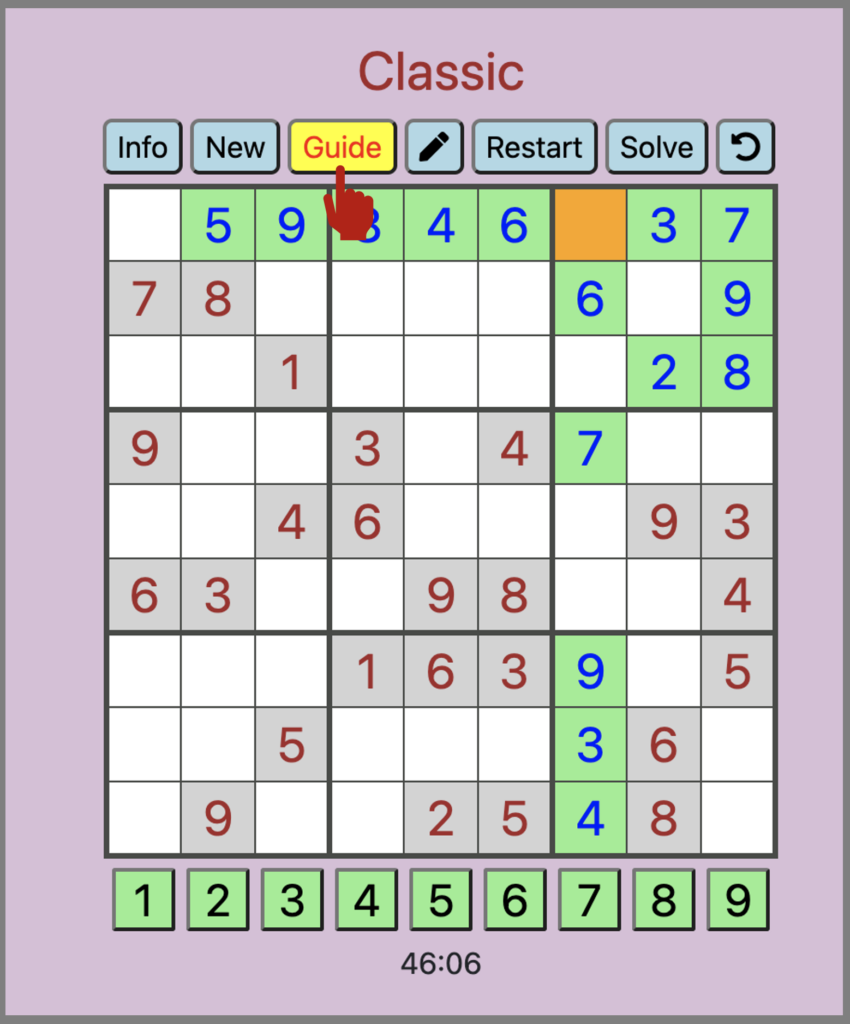

In the example 2 below, the highlighted cell is surrounded by the numbers 1, 2, 3, 4, 5, 6, 8, and 9 in the same row, column, or region. So, it is only possible to put the number 7 in that cell.

Example 2 :
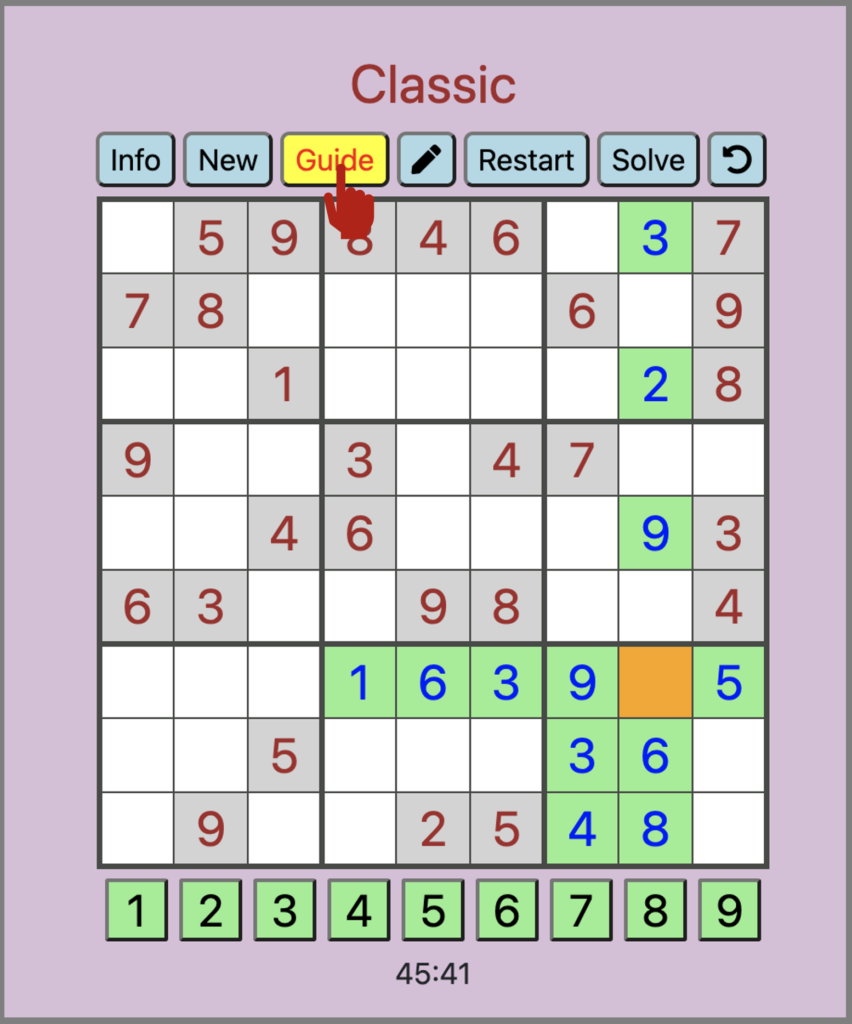
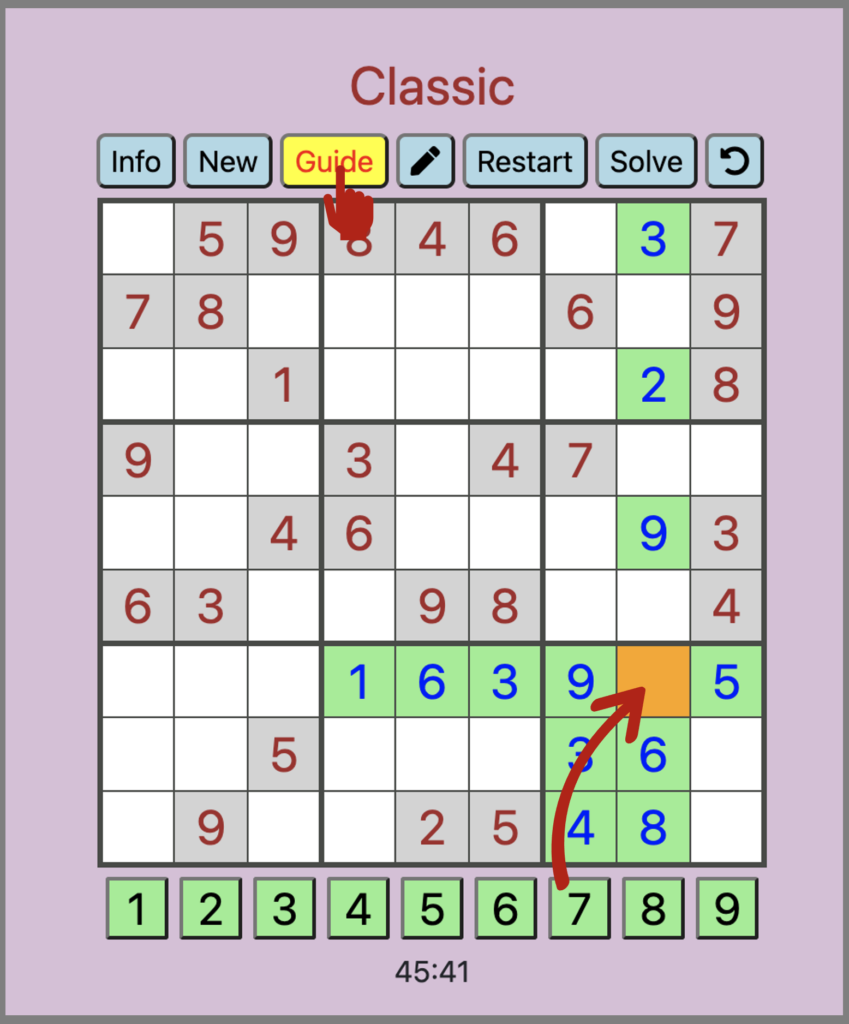
You can repeat this search many times, and the more cells you fill, the greater the chance of finding new cells with a single solution.
Solving number by number
The second way to use Guide mode is by selecting numbers from the board, which will highlight all the same numbers and allow you to identify cells that are the only option to place the same number.
In the Example 3, the selected number is number 6. It is placed in regions 2, 3, 4, 5, 8 and 9. Highlighting the number 6 on the board, we can see that in region 1, 6 and 7 there is a single cell that allows us to place the number 6.
All these unique cells are shown with a blue box in the diagram. , where we also show in light blue the 2 options to place the number 5 in regions 1 and 2.
Remember the numbering of regions on the right.

Example 3

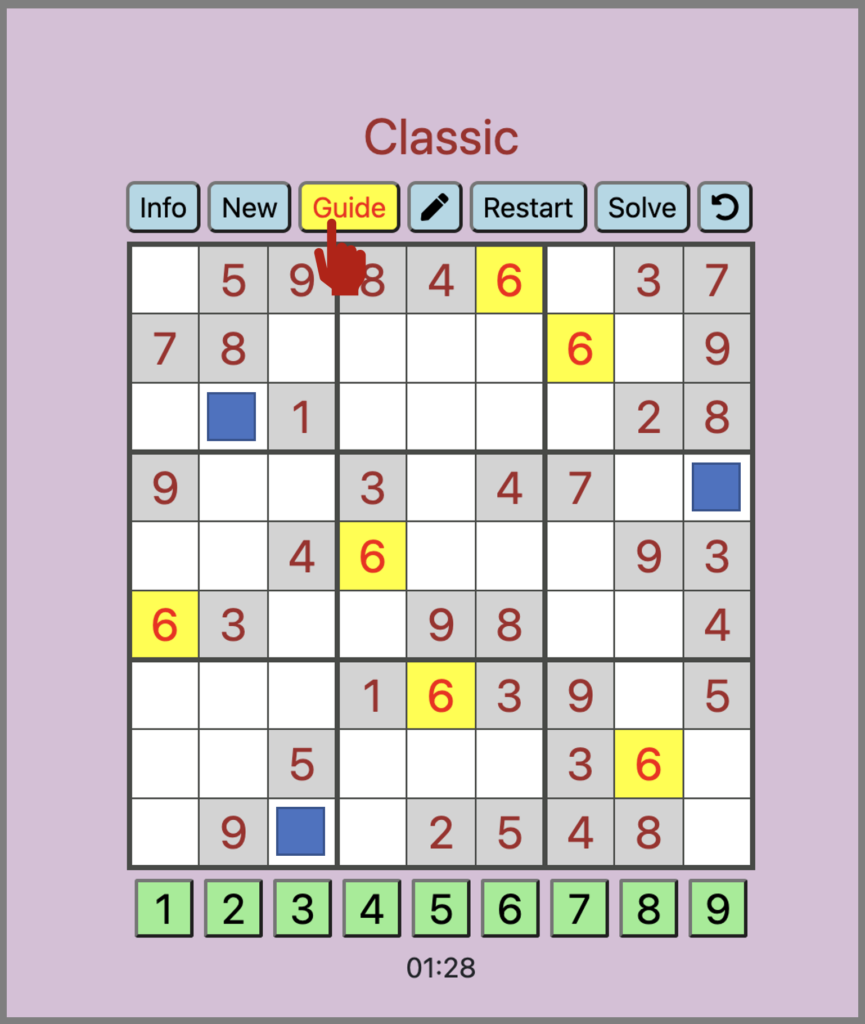
In the Example 4, the selected number is number 8. It is placed in regions 1, 2, 3, 5, and 9. Highlighting the number 8 on the board (clic it), we can see that in region 6 and 8 there is a single cell that allows us to place the number 8. After place them, you will see that in regions 4 and 7 there is also a single cell to place the number 8.
Example 4
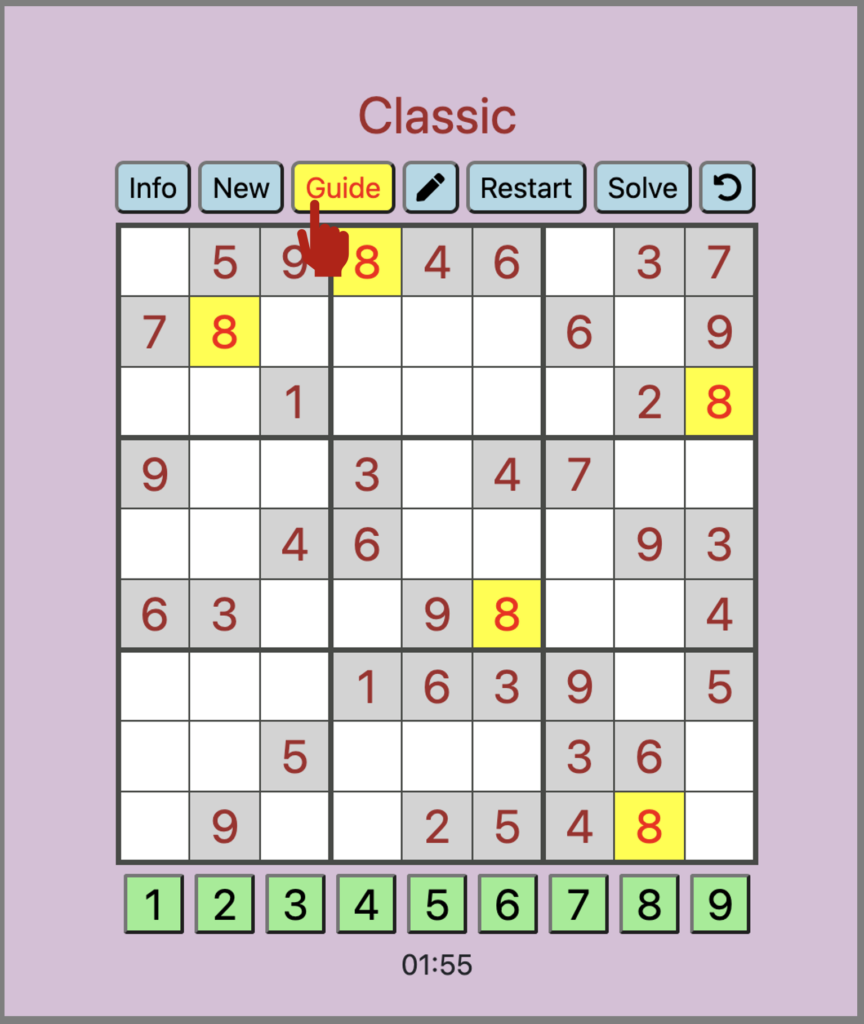
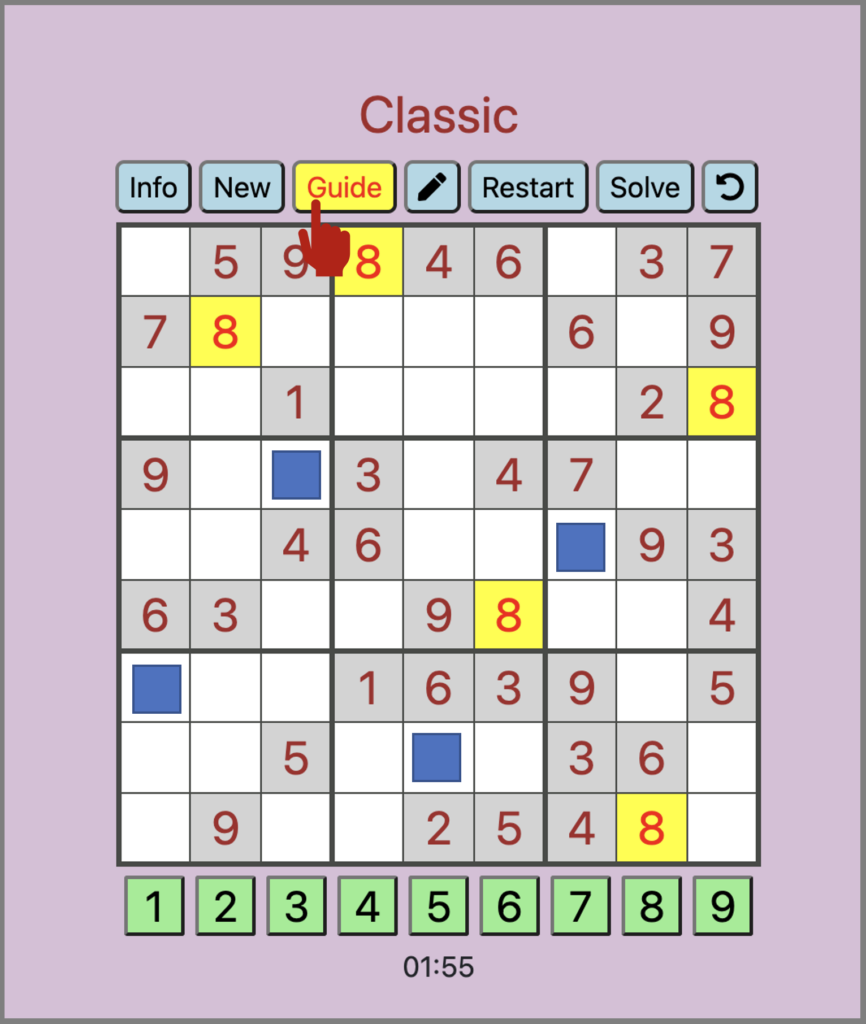
In these two examples we saw that the numbers 6 and 8 were completed on the board. This will not always be the case, with other digits you will only be able to identify some cells to fill, but not all.
Solving with the pencil
Using the pencil, you can write in each cell all possible candidates for that cell.
This work can be done for a row, a column, a region, or for the entire board.
The first step in this technique is to select the pencil mode ON and place all the candidates in the empty cells (for the example, we did it in the whole board).
Finished, we will see some or many cells that have a single candidate. Consequently, for those cells, it is obvious that the solution is given.
Then, as seen in the diagram, the unique numbers already identified can be placed (in this case there are 21 cells).
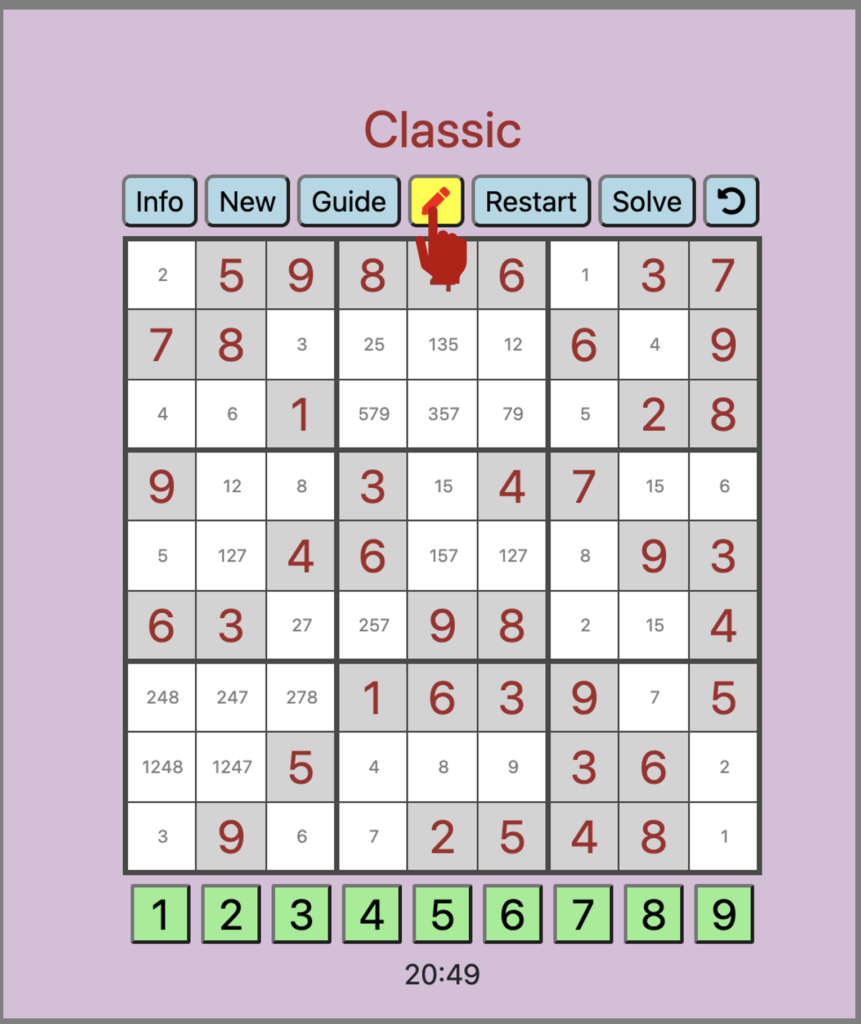
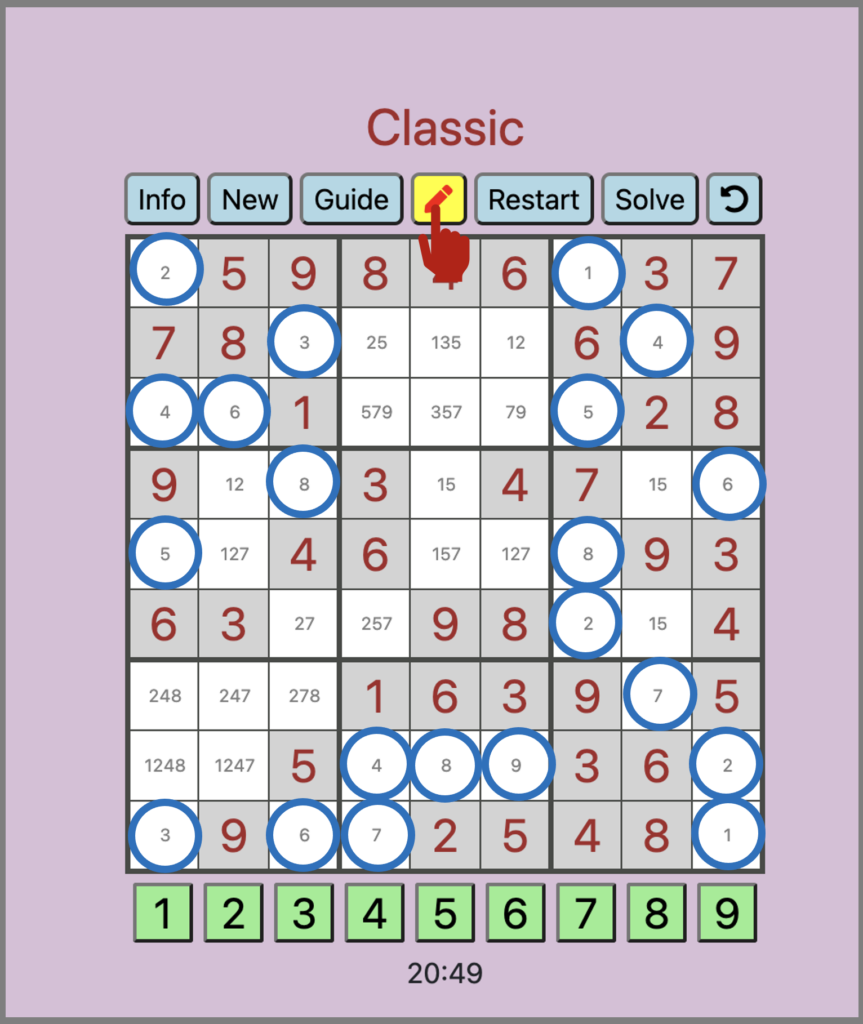
Second step. After placing the unique numbers identified in the first step, we will have to repeat the process. In CrossGames21, when correct numbers are placed, the system discards candidates with the same number located in the same row, column, or region, giving rise to new cells with unique solutions.
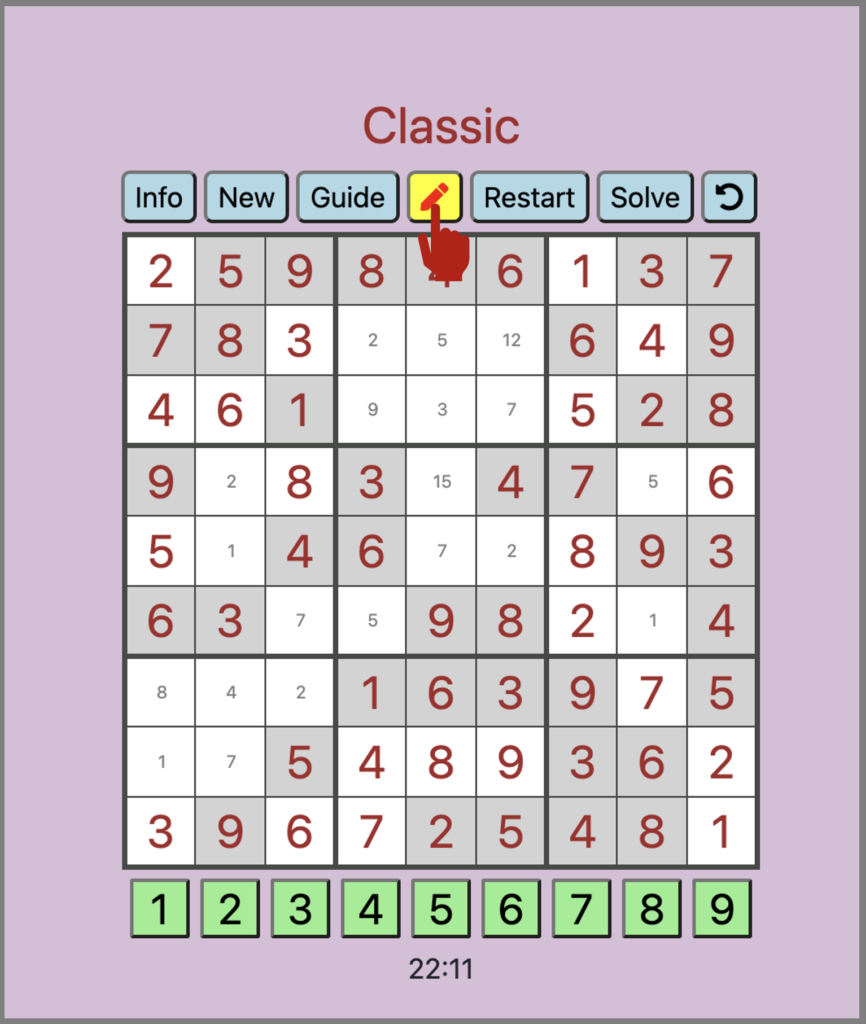
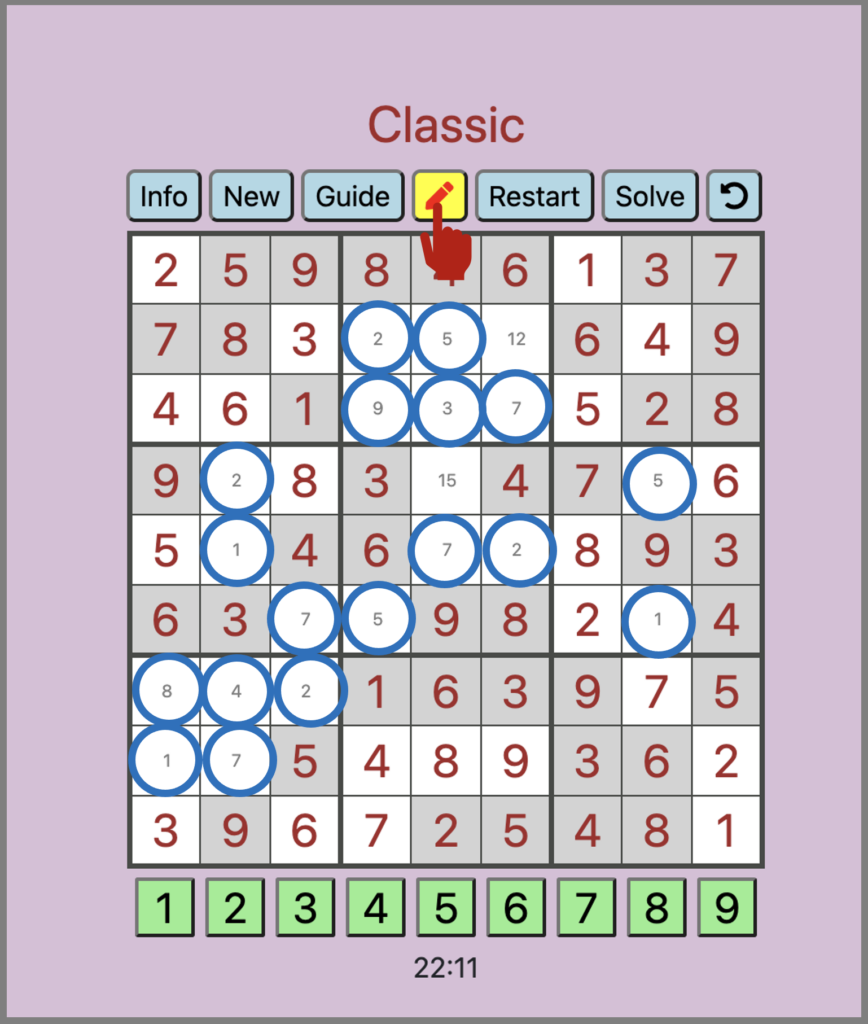
Now we have in our example 18 new cells to place. In two steps the game advanced from 40 to 61 and then to 79 full cells.
The third step is the same. Now we have the last two cells to fill, to finish the game with its 81 cells.
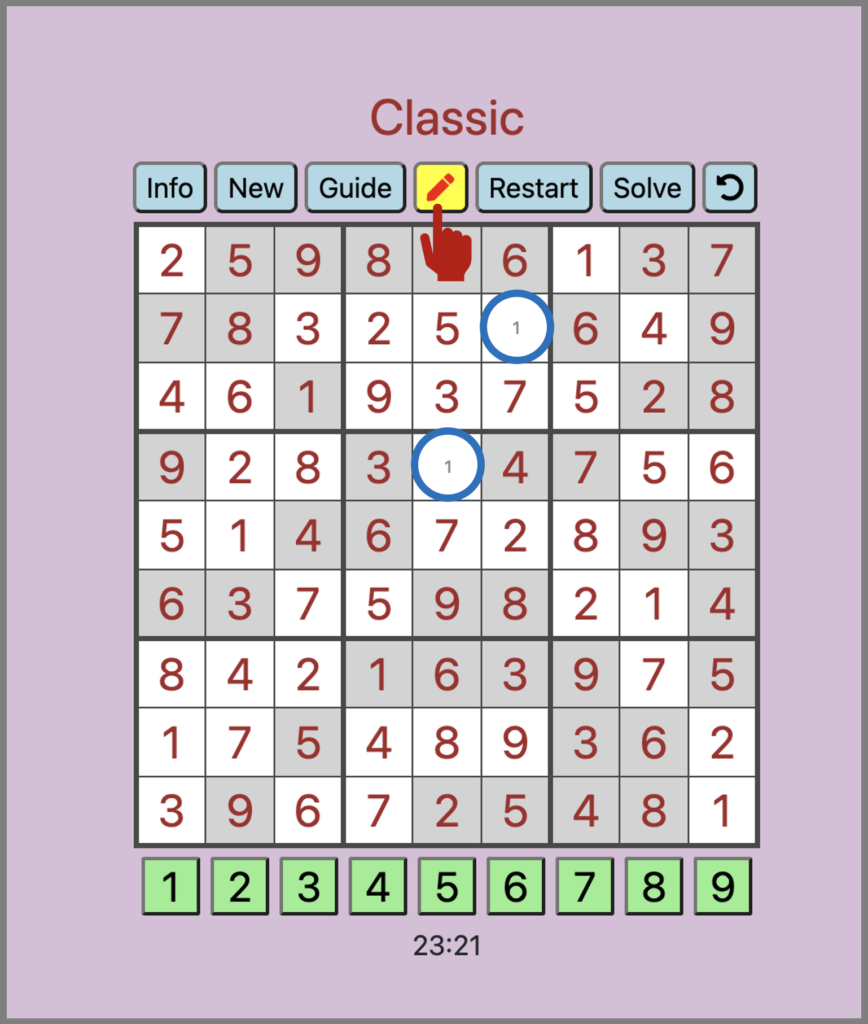
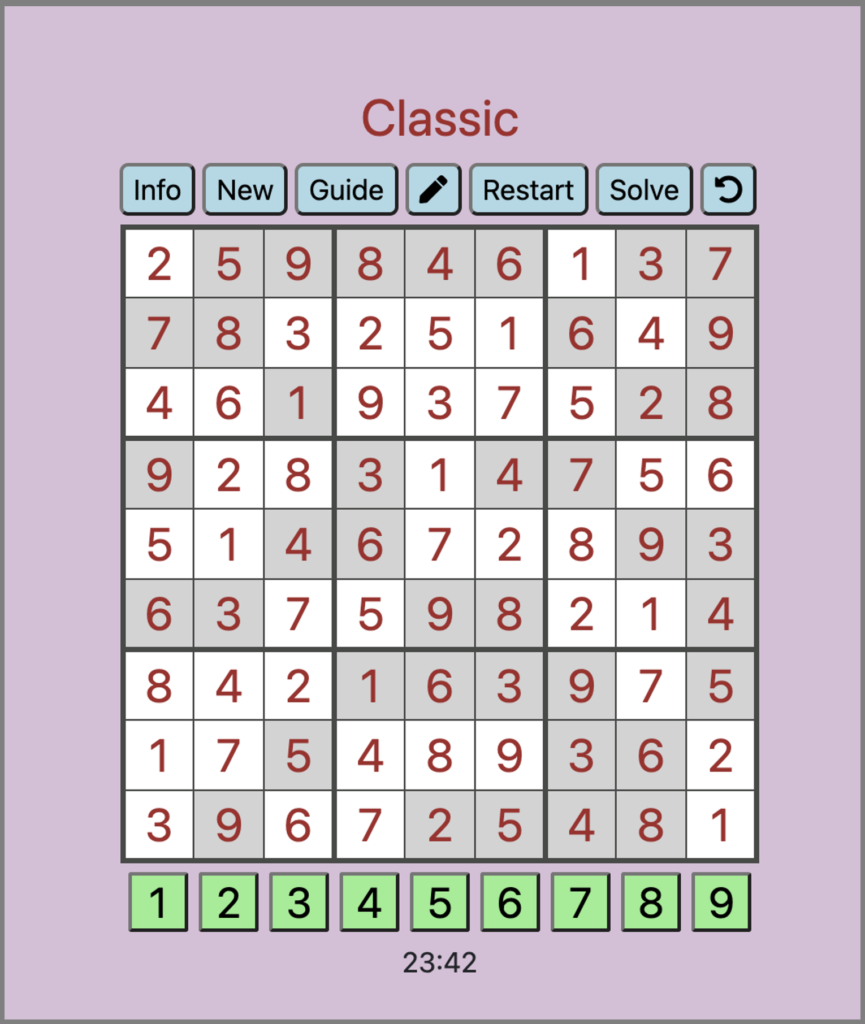
This solution technique is very effective, but it has the tediousness of initially having to fill all the candidates for all the empty cells, which makes it more useful in partial applications in sectors, regions or certain moments. It is also combined with the technique of solution by numbers.
Lets go to play and good luck !!